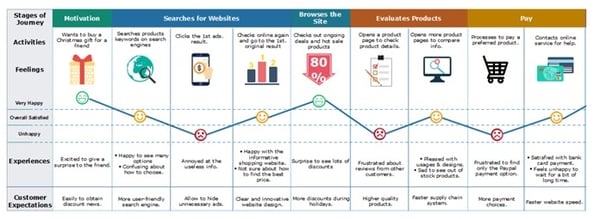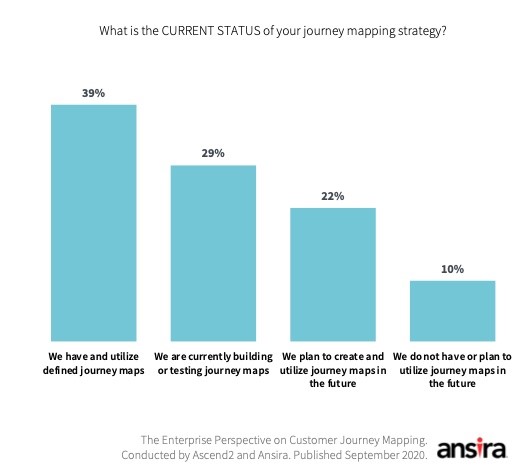The steady downfall of inter-departmental friction and siloed companies have led the way to the rise of RevOps. Similarly, an increasing trend in interdepartmental collaboration, data-driven marketing, and cross-functional tools have boosted revenue operations even further.
RevOps is the brainchild of business leaders and executives who realized that today's modern business ecosystem required a greater degree of alignment between the varying parts of an organization.
At its core, RevOps is a centralized process that helps businesses recognize and line up revenue opportunities in their sales, marketing, and customer success strategies. For this reason, RevOps serves as a blueprint for sustainable business growth and aids organizations in getting there.
Adopting a RevOps approach can lead an organization to reap innumerous benefits.
One of the most known benefits of using revenue operations is that every business's operations function – including its Marketing, Sales, and Customer Success – are aligned to meet common goals.
An ensemble of teams working in tandem toward the same objectives can lead to numerous other gains like:
- A heightened awareness of what your target customers expect from you
- Happier and more satisfied customers
- Clearer expectations for your team
- Sustainable growth and more revenue
- Consistent tech stack
Implementing a revenue operations technique well can bring to a business can impulse it enough to rise above its competition.
The Importance of Customer Journey Mapping
A customer journey map is a roadmap that identifies the various steps a prospect takes to acquaint themselves with a company and its products. It should follow a natural path and mirrors the general questions and concerns leads are likely to have about topics within the company's expertise and industry.
Customer life cycle mapping is a reliable way to discover and act on how your customers address the issues your business caters to. It also serves to outline their general expectations of how a company should engage with them.
Mapping the customer journey is one of the biggest challenges for organizations that aim to create and implement a successful revenue operations strategy.
The key to a successful customer journey mapping is identifying, interpreting, and responding to the signals that your buyer personas are likely to react to positively. Signs to recognize can range from various things such as which industry influencers your target customers trust, competitors' customer life cycles, and the general expectations your customer base has around choosing and vetting businesses.
Teams with a deep understanding of their company's customer journey can better assess an individual prospect's progress within this journey to deliver a more consistent and smooth experience.
RevOps helps with Customer Retention
Customer retention is a byproduct of a healthy customer life cycle. Efficiency and transparency are paramount to this dynamic – an organization's employees need to know the natural steps a prospect goes through while learning about the brand and the products and services it has to offer. Similarly, leads need to feel that their knowledge and interest in purchasing from a particular company make sense.
For this reason, businesses that choose to implement a revenue operations approach are more likely to see a growth in their customer retention rates.
The reason behind this: when team members understand their fundamental responsibilities and the role they play toward achieving the goal of generating more customers and more returning customers, the roadmap of the customer life cycle seems more straightforward.
In a customer life cycle, an organization walks its prospects through various steps that ultimately steer prospects to determine whether to pay for a product or service (and eventually advocate for that brand amongst their colleagues or friends) or not. The frequency with which a prospect takes a step toward becoming a paying customer and/or a returning customer has an inevitable influence on a company's customer retention and churn rates.
While every business can have various customer journey maps for their different buyer personas, most of them play out in similar ways.
The customer life cycle starts with the marketing staff that works to create brand awareness and engage prospects with content. Sales participates by nurturing sales qualified leads into paying customers. The customer success team ensures prospects and clients alike get their questions answered, and their use of the product or service is as smooth as possible.
 (Source: Edraw)
(Source: Edraw)
Inevitably, a customer life cycle that functions in a similar fashion is often a tell-tale sign of healthy revenue operations strategies at play.
A customer journey that is disjointed, repetitive, and leaves both team members and prospects at a loss of the next step in the prospecting process is often a sign that there is an underlying issue at the marketing, sales, customer support, or operations level.
A study on the Customer Journey Mapping
Ansira conducted an August 2020 survey among 123 marketing professionals (49% of these professionals work for companies with 50-500 employees, and 51% for organizations with more than 500 employees).
39% of respondents reported using a fully defined customer journey map, 29% said they are currently creating or testing their customer journey maps, 22% plan to make these maps in the future, and 10% reported they have no plans to create one.

(Source: MarketingProfs)
This is a crucial point to note because while customer journey mapping is an essential tool used in revenue operations, many organizations are not making full use of it.
The 4 Building Blocks of RevOps
The transition from a siloed to a revenue operations approach is more likely to run smoothly when an organization optimizes the following 4 building blocks of RevOps.
Aligning cross-team incentives
The secret to RevOps success is building a cross-functional team that works toward a common goal instead of competing against each other to meet separate objectives.
Considering our example above of a typical customer life cycle, a cross functional team would function like this: the marketing team generates prospects for the sales team. Sales converts quality leads into paying customers, and the customer success team retains these customers. Throughout this process, each team is aware of how completing their work is the prerequisite for the next team's responsibilities.
Deciding which metrics to aim for
Metrics help organizations determine which goals to work towards and which strategies are working, and which are not.
For RevOps to work, teams need to be looking for specific metrics that align with their bottom line and ask the right questions – this is why monitoring performance and predicting growth is crucial to RevOps success.
For example, a company that struggles to retain their customers may need to reexamine their current customer retention strategies, adjust these, and closely follow how their customer retention rates and customer churn reflect these changes.
Choosing which metrics reflect attainable goals and what is required to reach other objectives is key to creating overall growth.
Choosing The Right Revops Technology For Your Business
In a traditionally siloed organization, the Marketing, Sales, and Customer Success teams may use a different tech stack to perform their responsibilities.
With a RevOps approach, all three rely on the same tech and access much of the same data.
To choose the ideal RevOps tech stack for your business, it is important to consider every team's specific needs and ensure that the technology you choose to use makes operations run smoothly.
Creating a solid RevOps foundation
As an organization grows and reaches its preestablished revenue goals, its operations and processes should also reflect this.
For this reason, those at the forefront of RevOps need to create a knowledge base (in the form of guides, customer life cycle maps, service-level agreements, among other things) for existing and future employees to rely on when devising new strategies or when interacting with prospects and current customers.
These preparatory measures' importance is to ensure that the company's core message and its goal of creating a better customer experience and generating revenue stay at the forefront of every RevOps initiative.
Common business challenges and how RevOps can solve them
There is no way around this; every organization faces specific marketing and sales challenges. With the right strategy in place, RevOps can help alleviate these problem areas.
Challenge #1: Encouraging customer loyalty
George Birrell, the founder of Taxhub, shared his company's current marketing setback.
"One of the biggest marketing challenges we've faced in the past is encouraging [customer] loyalty. When people think of their finances, they tend to go straight to big companies, rather than considering how much value they can get from smaller, innovative companies.
Getting people to be loyal to your brand is all about the quality of service you provide and how you build up a reputation for yourself (reputation is especially important in the finance industry). With that being said, if you keep at it by continuing to target people accordingly, offering your key selling points, and following through with providing high-quality experiences, you'll start to grow as we have."
At the center of RevOps is providing clients with a satisfying customer experience. Organizations that have identified a customer life cycle can better ensure their prospects and current customers have a positive experience when interacting with their brand.
When marketing, sales, and customer success work in tandem, existing clients are likely to feel their specific needs met.
Challenge #2: Educating consumers on the company's reliability and expertise
Amir Yazdan, CEO of GroMD, shared what his business's current marketing challenge has been.
"I think the biggest challenges in marketing and sales right now are a direct result of how consumers are choosing to purchase products and services. With the pandemic still underway, there isn't much what [was] once called "window shopping" going on. Consumers are researching online and being very decisive with their purchases.
For marketers, this is a golden opportunity to make the effort to educate your customers with in-depth blog content and email marketing strategies. With regional restrictions still in effect, you may never have a more captive audience!"
With revenue operation's focus on prioritizing and aligning every Marketing, Sales, and Customer Success effort, businesses can educate consumers on how their company offers the solution they require for their specific needs.
Challenge #3: Keeping up with changing technology
Reuben Yonatan, CEO of GetVoIP, shared his organization's challenge to stay on top of the latest and best tech to use that can help his business grow.
"The biggest marketing challenge is keeping up with the ever-changing digital technologies. Businesses must continually determine which emerging technology is right and evaluate the skills needed to master the new technology.
A good example to keep in mind is the emergence of TikTok. TikTok has been a goldmine for some businesses in terms of reaching a new audience. However, for B2B organizations, such as ours, TikTok does not work because our audience is not on the platform.
If a company does not discern that TikTok is not right for them from the word go, they will invest in technology and waste time, money, and effort. That process of keeping up and figuring out what you should jump on and what you shouldn't is challenging."
New technology emerges every day. For a business working hard to generate quality leads, convert these into paying customers, and inspire brand loyalty, staying on top of the latest tech stack can be overwhelming.
For this reason, it is recommended to work with RevOps professionals who stay on top of upcoming trends and manage your revenue-generating strategies in alignment with your long term goals.
Manage a cross-functional business
When done correctly, revenue operations can do a lot for an organization's growth. As more parts of a business become cross-functional and interdependent, companies can become more integrated, data-driven, and make better and faster decisions towards their future success.
While every organization is different and may have varying internal structures, investing in RevOps can substantially expedite its revenue growth and reduce its problem areas.




